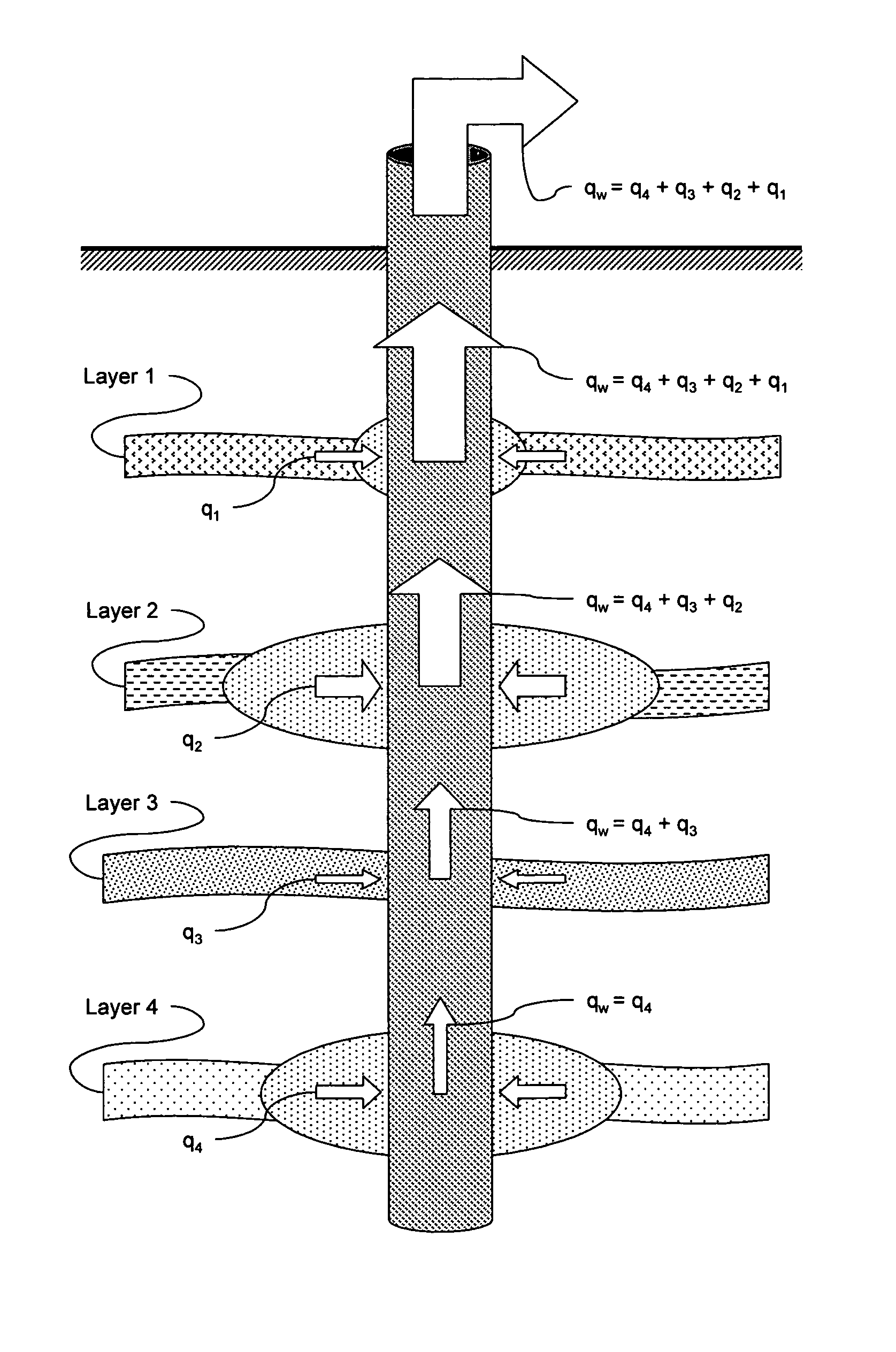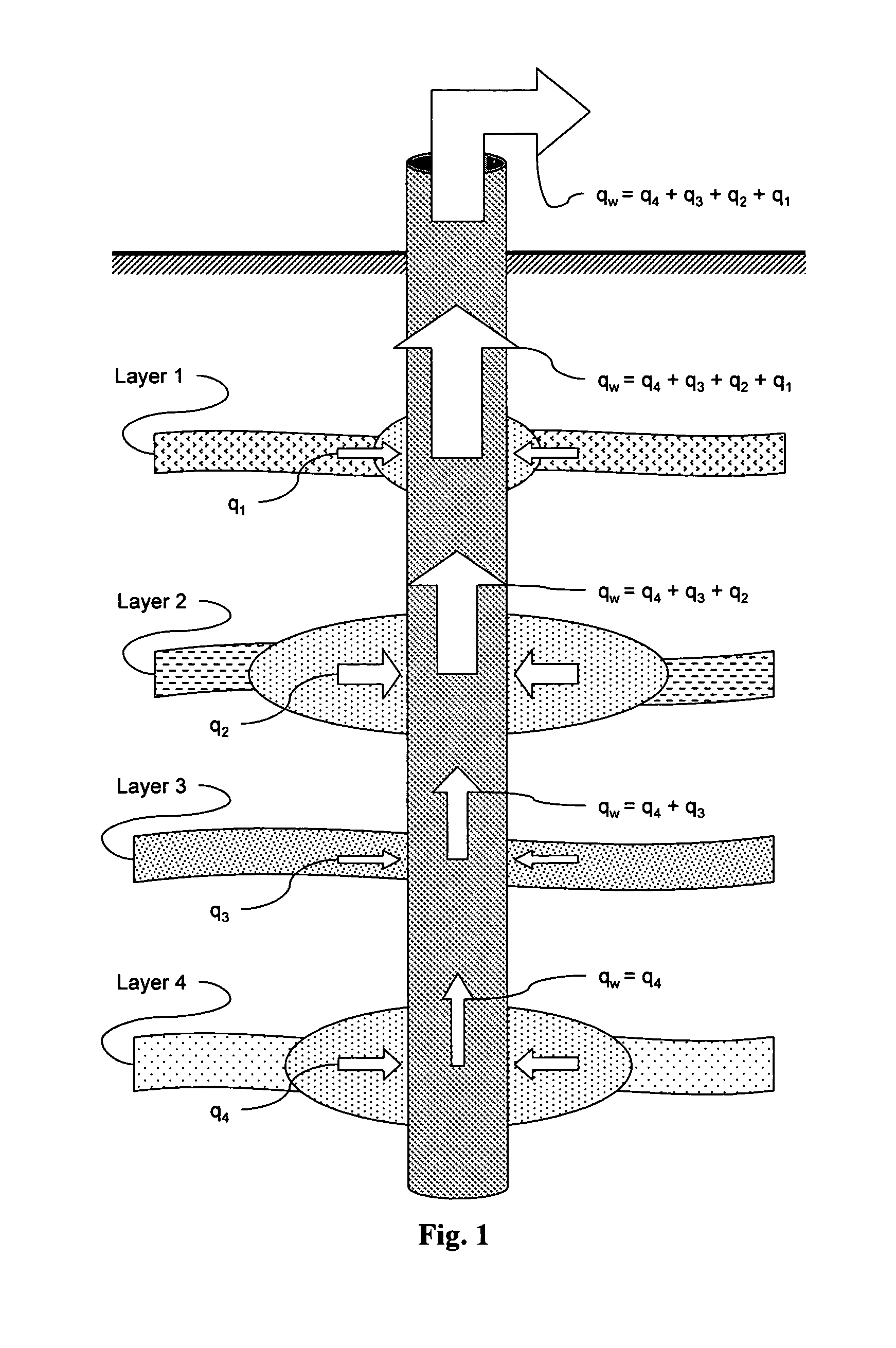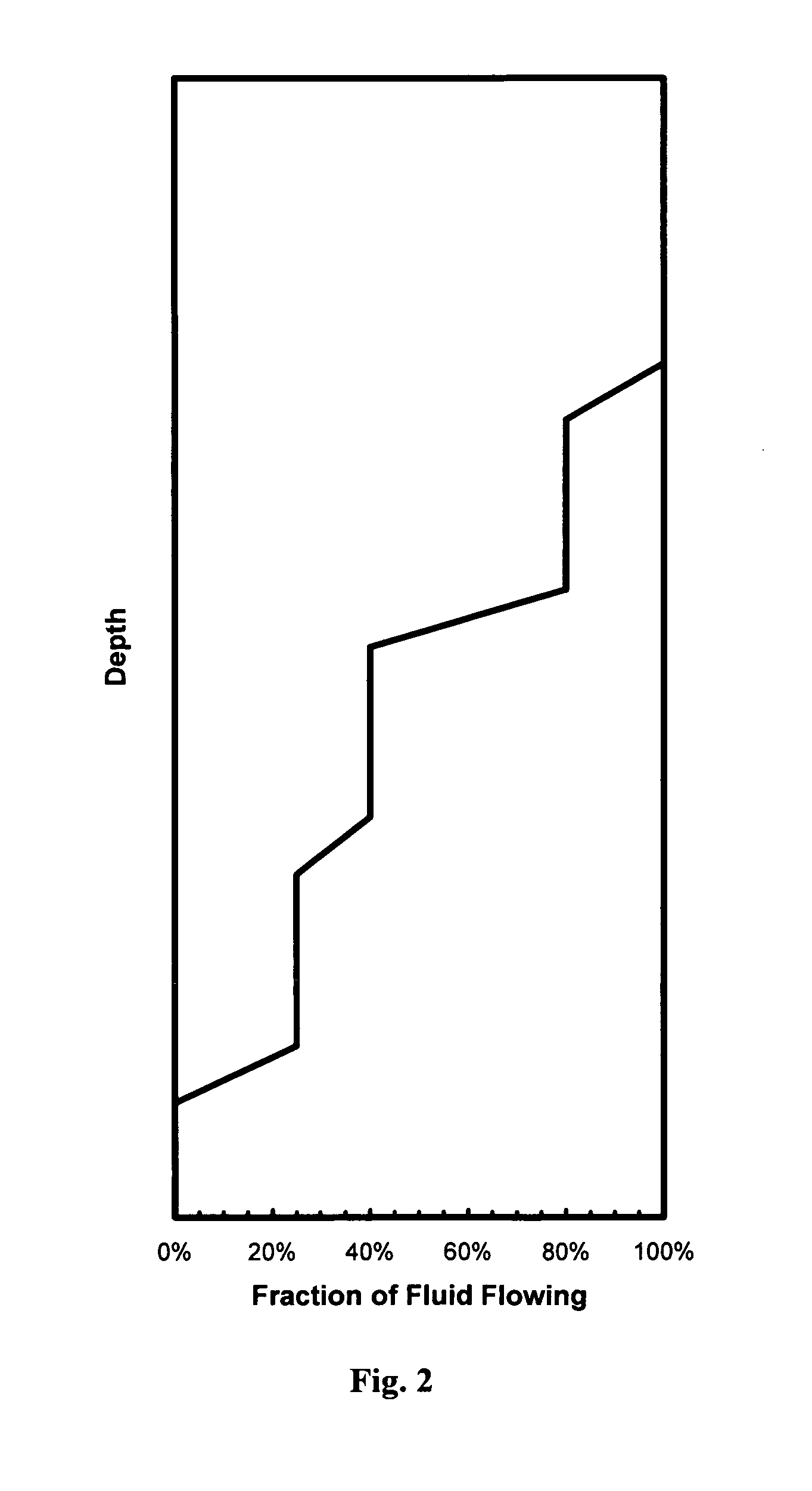Method for characterizing and forecasting performance of wells in multilayer reservoirs having commingled production
a multi-layer, reservoir technology, applied in seismology for waterlogging, borehole/well accessories, instruments, etc., can solve the problems of ignoring the accurate reconstruction of the production rate history of the individual layers, and avoiding the use of interpolation schemes
- Summary
- Abstract
- Description
- Claims
- Application Information
AI Technical Summary
Benefits of technology
Problems solved by technology
Method used
Image
Examples
embodiment
Preferred Embodiment
FIG. 5, FIG. 6, FIG. 7, FIG. 8
Single-Layer Predictive Model
[0126]FIG. 5 shows a flowchart of the operation of the constant pressure step option of the Single-Layer Predictive Model during calculation of the time step from tj−1 to tj. First, the integration time variable, t, is initialized to the start time for the time step, tj−1, and the time increment to attempt, Δttry, is set to the length of the time step, tj-tj−1, 510. The Bulirsch-Stoer algorithm is used to advance the solution through time, 520. Since the Bulirsch-Stoer algorithm is an adaptive step size algorithm, the time increment actually taken, Δtdid, may be smaller than the time increment attempted, Δttry. The Bulirsch-Stoer algorithm calls a routine to calculate the derivatives in Eqs. 22 and 23 as needed, 530. The integration time variable t is incremented by Δtdid, and the time increment to attempt, Δttry, is updated, 540. Finally, steps 520 through 540 are repeated until the end of the time step ...
PUM
 Login to View More
Login to View More Abstract
Description
Claims
Application Information
 Login to View More
Login to View More - R&D
- Intellectual Property
- Life Sciences
- Materials
- Tech Scout
- Unparalleled Data Quality
- Higher Quality Content
- 60% Fewer Hallucinations
Browse by: Latest US Patents, China's latest patents, Technical Efficacy Thesaurus, Application Domain, Technology Topic, Popular Technical Reports.
© 2025 PatSnap. All rights reserved.Legal|Privacy policy|Modern Slavery Act Transparency Statement|Sitemap|About US| Contact US: help@patsnap.com



